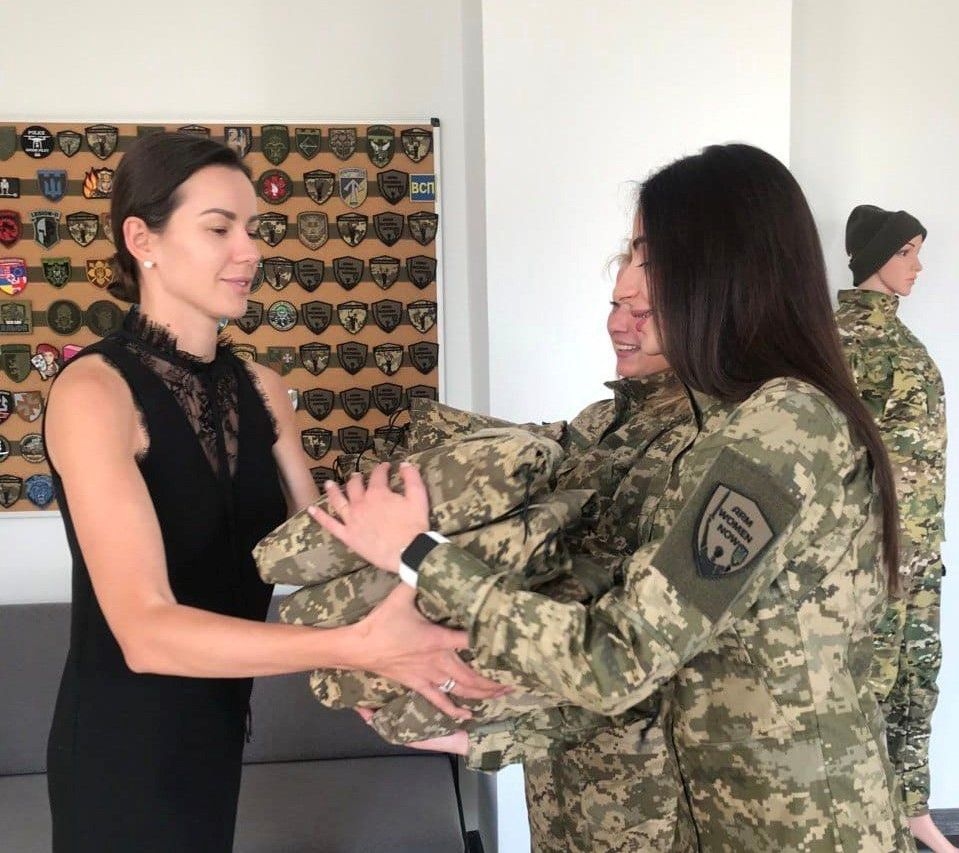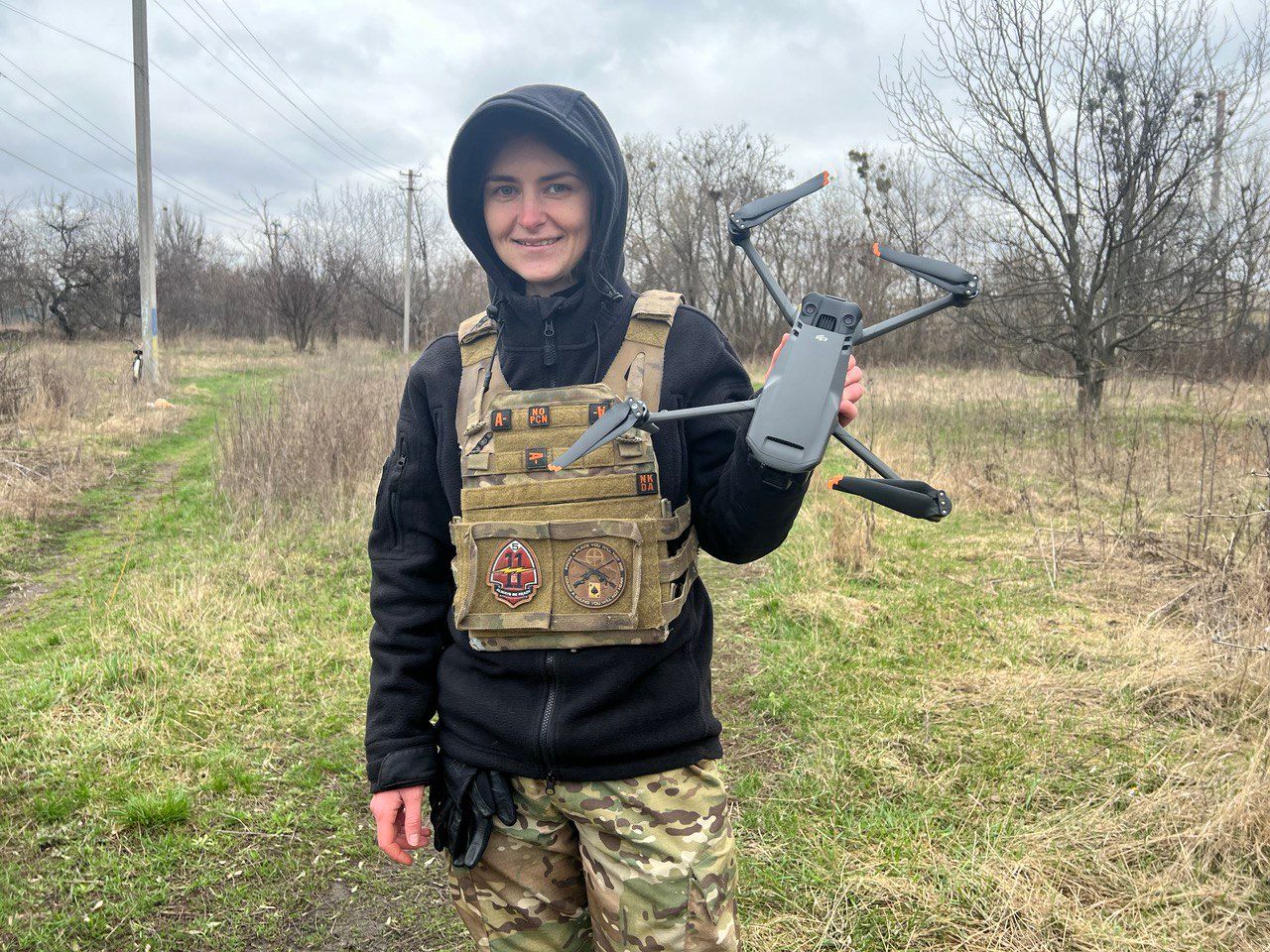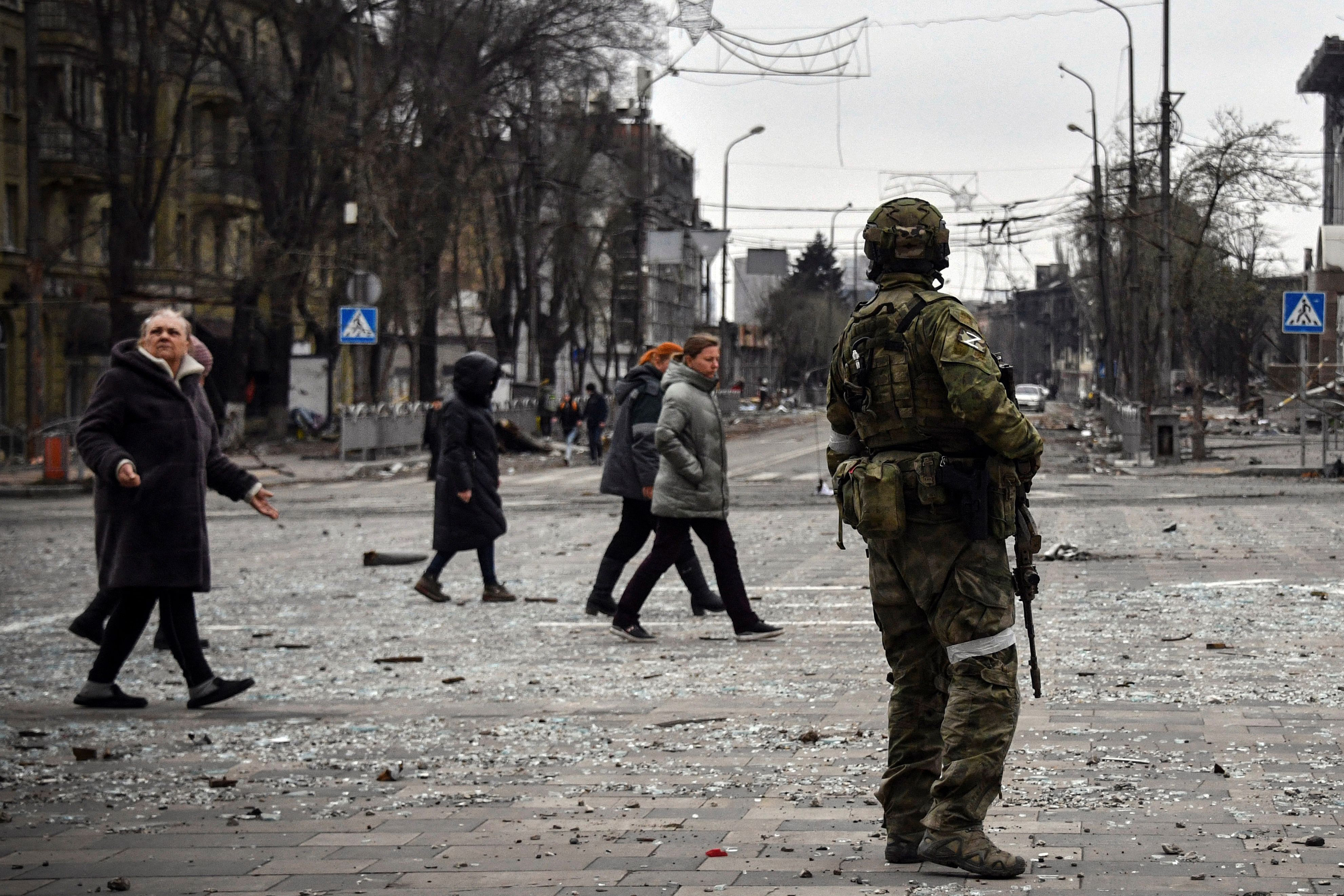‘She needs armor.’ Female Ukrainian soldiers call for equality

Many passersby raise their heads when walking past the Princess Olga monument in downtown Kyiv. Some even stop, gazing at the statue with surprise.
Although it has been there for years, it seems the monument has never gotten as much attention as it has in recent weeks.
In early September, body armor mysteriously appeared on the statue.
"She needs armor," its inscription reads.
Led by the Ukrainian Armor manufacturer, the initiative called for supplying Ukrainian female soldiers with modern anatomic armor designed to fit their bodies.
"Women at the front line are getting killed, seriously wounded, and their health is being affected due to the lack of proper armor," the company’s press service told the Kyiv Independent.
Roughly 60,000 women currently serve in the Ukrainian military, while 5,000 of them have active combat roles, according to the Defense Ministry. Although the number is still a fraction of the hundreds of thousands of male defenders, all female Ukrainian soldiers have volunteered to go into battles as the country does not conscript women.
But besides fighting Russia, they are also forced to battle for equality in the army.
Despite fighting alongside men since Russia first invaded Ukraine in 2014, the government officially allowed them to serve in front-line combat positions only in 2018.
No woman holds a senior military role in Ukraine, and only 8.9% of all officers are female, according to an April report by the Ukrainian Veterans Foundation, a state institution run by the Ministry of Veterans Affairs.
Still, for years, the state has been supplying its female defenders with male uniforms, body armor, and even ill-fitting underwear, which does not provide the protection and mobility needed in combat, endangering their lives.
Only in August, over 1.5 years into the full-scale war, the Defense Ministry approved a standard sample of summer field uniform for female soldiers. But that was just the first step as the uniforms are yet to be supplied.
To get suitable gear, female soldiers must either seek the help of nonprofits, purchase it independently, or remodel the male uniform they have been provided with.
"The needs of women in the army are not met at all," according to Ukrainian lawmaker Iryna Nykorak, who is also the founder of Arm Women Now, a nonprofit that provides female soldiers with uniforms.
"Taking those needs into account is part of the overall gender equality and basic respect for women," she told the Kyiv Independent.
It's not just uniform
Violetta Tarasenko, 29, has had a long and thorny path of becoming a soldier.
She lost two homes because of the Russian war — in Donetsk Oblast's Avdiivka in 2014 and then in Mariupol in 2022. Tarasenko was fighting Russian propaganda as a journalist and videographer but felt that it "hadn’t helped" and decided to start fighting Russian troops.
"I had never held weapons before (military training), but I had an understanding that we will need enough people to fight for quite a long time," Tarasenko told the Kyiv Independent.
In May, Tarasenko signed a three-year contract with the Armed Forces of Ukraine. After undergoing military training in Chernihiv Oblast, she joined one of the assault companies.

At the training center, Tarasenko was given male fatigues, body armor, and underwear, much bigger than her actual size. While the trousers happened to fit her well, Tarasenko had to adjust the military jacket.
"Everyone's feet hurt from the military boots we were given," she says.
She knew that for actual combat, she would need a uniform that would fit her perfectly. For that, she had to seek the help of her friends and raise money to buy vital gear. The only thing she could not find on the market was a smaller-sized helmet.
So far, supplying female defenders with suitable necessities has been primarily on the shoulders of volunteers.

Some local charities such as the Ukrainian Women Veteran Movement, widely known as "Veteranka,” and "Zemliachky," manufacture or procure uniforms for female soldiers. However, their capacity is not sufficient.
According to Nykorak, even though volunteers "play key roles" in supplying "entire brigades and military units," a systematic approach is highly needed.
"It can not be that a woman fights wearing male underwear while Ukraine wants to join the EU and NATO," she says.
The Defense Ministry’s recent approval of standards for summer uniforms for women sparked hope for further improvement.
"It is a necessary step that will help the Defense Ministry to purchase and provide women in the Armed Forces (with summer uniforms)," says Nykorak.
In a comment to the Kyiv Independent, the Defense Ministry said that the Armed Forces logistics department had ordered the ministry’s resource department to purchase 50,000 pieces of summer uniforms for women. The ministry plans to purchase the uniform in the fourth quarter of the year.
It didn’t, however, specify when the uniform would be provided to the soldiers. Nykorak hopes the process will start at the beginning of 2024.
She also says that her charity has provided around 5,450 female soldiers with uniforms throughout over a year of their work. They developed the uniform based on the U.S. standards but adapted it according to Ukrainian military traditions.
Visually, the uniform is not different from the one for the Ukrainian male soldiers, but it fits female bodies, says Nykorak. It is also manufactured in Ukraine.
Tarasenko is among the soldiers who Arm Women Now provided with the uniform for free.
"It's the best uniform I have had so far," she says.

Having a uniform and body armor that fits well is not just about comfort and effectiveness during combat but also about saving lives.
An ill-fitting uniform might deprive one of the needed mobility. Male body armor sometimes fails to protect women when it does not fit tightly due to the difference in body shapes, leading to injuries that could have been prevented.
To provide Ukraine’s female defenders with essential protection, Ukrainian Armor has recently launched the production of the first "female armored suit." According to its press service, the new armor is comfortable and "fits the (female) body perfectly," providing protection from bullets and shrapnel.
In August, former Defense Minister Oleksii Reznikov said that the ministry continued to work on introducing female body armor.
The Defense Ministry told the Kyiv Independent in September that the development of new models of personal protection and uniforms for female soldiers is underway.
'No sexism in trenches'
Tarasenko was unhappy with the general treatment of men and women at the military training center.
Among the nearly 120 people training alongside her, women were the majority, she says, assuming that the number of female soldiers is increasing. Despite that, gender-based discrimination has not disappeared from the training fields.
Tarasenko says she heard many sexist comments from the instructors there. She recalls one of them saying that "he does not trust women in the army" and that "there is nothing for them to do there."
It didn’t demotivate her, Tarasenko says. But such comments could be discouraging for others.

Later, Tarasenko says that she and other women were refused to be sent abroad for military training because of their gender.
While she was still at the training center in Chernihiv Oblast, an officer from another unit came to select personnel to take part in a training in the U.K. Although Tarasenko and other female soldiers wanted to go, they were told that "women are not taken abroad," and they would "return pregnant" if they went there.
"We were not taken because we are women," Tarasenko says.
The Defense Ministry told the Kyiv Independent that it ensures "equal access to military education and career growth" and that systematic work is carried out within the Armed Forces to ensure "equal rights and opportunities for women and men."
Women have also faced barriers when it comes to acquiring certain military professions.
The Odesa Military Academy, for instance, didn’t allow women to enter the faculties of military intelligence and special operation forces until this year.
"We see that women, in general, were not allowed to enter some faculties of some educational institutions," says Kateryna Halushka, a combat medic within Hospitallers, a Ukrainian volunteer organization of paramedics who save lives on the front line of Russia's war.
Even when they are accepted, women often face gender-based stereotypes at educational facilities, such as that they are "looking for husbands" there, Halushka says.
There appears to be much less sexism on the battlefield and in the trenches than in the offices and institutions.
Tarasenko says that the situation in her company is much better than it was in the training center. However, even though she is happy with her commander, Tarasenko says she would want him to allow her to go to combat positions alongside men more often.
"I have to really ask to go to combat positions. Because I'm a woman, they tend to overprotect me," says Tarasenko.
"I am still getting used to the army because it is such a closed men's club," she says.

Halushka believes that the treatment of women in the army reflects the overall treatment of women in society, which "for many centuries did not perceive them to be strong enough" or equal to men.
She says that in order to be taken seriously at any job, but especially in the army, women must often jump over their heads and work much harder than men. And it’s a global issue, she says.
"Half of people worldwide still believe men make better political leaders than women, and more than 40 % believe men make better business executives than women," the United Nations Development Foundation found in its latest report released in June 2023.
The 2020 survey by the Ukrainian sociological group Rating shows the "absolute majority" of respondents agreed that the most important task for a woman is to take care of the home and family, while for men, the main task is making money.
"Frankly, it's a huge problem since it's enough for a man just to be a man. But a woman needs to (always) prove something to someone to be treated respectfully and adequately," Halushka says.
All, however, agree that in small but gradual steps, Ukraine’s Armed Forces are becoming more accepting of women and that the system has seen some positive changes since Russia first invaded Ukraine in 2014.
"Our Armed Forces are fighting as they can, and everything in the army is connected to real life," she says.
"If it changes in real life, it changes in the army too."
Note from the author:
Hi! Daria Shulzhenko here. I wrote this piece for you. Since the first day of Russia's all-out war, I have been working almost non-stop to tell the stories of those affected by Russia’s brutal aggression. By telling all those painful stories, we are helping to keep the world informed about the reality of Russia’s war against Ukraine. By becoming the Kyiv Independent's member, you can help us continue telling the world the truth about this war.
















